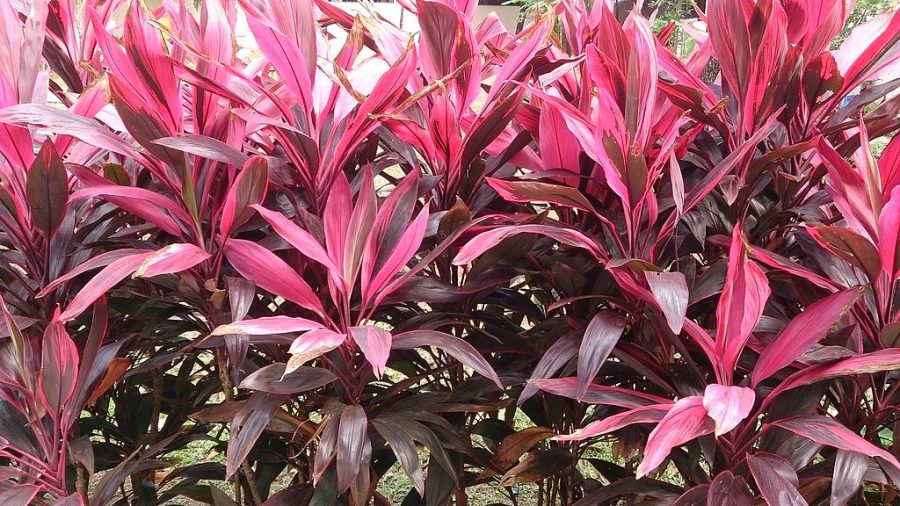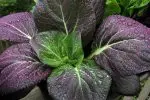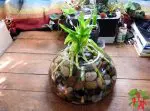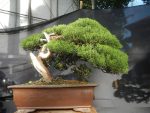This post contains affiliate links. If you buy something from one of our links we may earn a commission. Thanks

Discover the secrets of Cordyline Red Sister Indoor Care with our friendly guide! Transform your space into a tropical paradise and keep your plant thriving.
Cordyline Red Sister indoor care involves placing the plant in bright, indirect light and maintaining a temperature range of 65-75°F. Water when the top inch of soil is dry and mist the leaves to increase humidity. Fertilize every 4-6 weeks during the growing season with a balanced liquid fertilizer.
Are you ready to dive into the wonderful world of Cordyline Red Sister Indoor Care?
Well, you’re in the right place! Let’s explore how to turn your home into a lush, tropical haven, filled with the vibrant beauty of the Red Sister plant.
Together, we’ll uncover the secrets to keeping this stunning foliage healthy and happy, while adding a unique touch to your living space.
So, let’s get started, shall we?
A Brief Introduction To Cordyline Red Sister Care
Importance of indoor care
Welcome to the enchanting realm of the Cordyline Red Sister!
This captivating plant, known for its vivid burgundy to pinkish leaves, is sure to turn heads and elevate your indoor space.
But, to truly appreciate its beauty, it’s crucial to understand the importance of proper indoor care.
In this guide, we’ll give you a brief introduction to the Cordyline Red Sister and highlight why taking care of this tropical gem indoors is essential.
Get ready to embark on a journey towards greener, happier living!
Understanding the Cordyline Red Sister
Buy Your Own 3 Gallon Cordyline Sister Ti Live Plant
Hey there, plant enthusiasts! Let’s dive into understanding the Cordyline Red Sister, an alluring and colorful addition to any indoor space.
This charming plant has a fascinating background, unique characteristics, and an array of captivating qualities just waiting to be discovered.
So, join us as we delve into the captivating world of the Red Sister, and together, we’ll uncover the secrets that make it such a beloved choice for plant lovers everywhere.
Are you ready? Let’s go!
The Roots of Red Sister: Background Information and Origins
Let’s start our journey with the Red Sister’s origin story. This striking plant hails from the Cordyline family, specifically the Cordyline Fruticosa species.
Native to Southeast Asia, the Pacific Islands, and eastern Australia, it has captured the hearts of plant enthusiasts worldwide with its vibrant foliage and tropical charm.
A Plant of Many Names: Common Names for Cordyline Red Sister
This gorgeous plant goes by many names, each as charming as the next.
Some of the most popular ones include Good Luck Plant, Ti Plant, Florida Ti Plant, Hawaiian Ti Plant, Palm Lily, Cordyline Fruticosa ‘Red Sister’, Red Sister Cordyline, and Red Sister Hawaiian Ti Plant.
No matter what you call it, the Red Sister’s beauty is undeniable.
The Beauty of the Red Sister: Characteristics of the Plant
Now let’s talk about what makes the Red Sister so special.
This evergreen plant boasts a stunning array of maroon to pinkish leaves, measuring around 12” to 30” inches long and 4” to 6” inches wide.
In ideal conditions, it can grow to an impressive 4’ to 6’ feet tall.
While it rarely blooms indoors, when grown in its natural habitat, it produces tiny, delicate flowers in shades of pink, purple, or white during late spring to early summer.
In rare instances, it even bears fruit that resembles red-colored berries. With such a remarkable appearance, the Red Sister is a true showstopper in any indoor space.
Caring for Your Cordyline Red Sister Indoors
Buy Your Own 3 Gallon Cordyline Sister Ti Live Plant
Ready to give your Cordyline Red Sister the royal treatment? Let’s explore the ins and outs of indoor care for this fabulous plant!
Caring for your Red Sister indoors ensures it remains a stunning centerpiece in your home, showcasing its vibrant foliage for all to admire.
In this section, we’ll delve into the essential aspects of caring for your Red Sister, from light and temperature requirements to watering, feeding, and more.
So, let’s roll up our sleeves and learn how to keep your tropical beauty thriving indoors!
Growing Tall and Proud: Size & Growth
The Cordyline Red Sister is an eye-catching plant that can grow between 4′ and 6′ feet tall under ideal conditions.
Its leaves boast vibrant hues of burgundy to pink, measuring about 12″ to 30″ inches long and 4″ to 6″ inches wide.
With its impressive stature and colorful foliage, the Red Sister makes a stunning statement in any indoor space.
A Blooming Rarity: Flowering and Fragrance
While indoor Red Sisters rarely bloom, those growing in their natural habitat produce delicate pink, purple, or white flowers during late spring to early summer.
These tiny, fragrant blossoms grow in clusters and measure about 0.5″ inches wide. In rare cases, the Red Sister may also produce fruit resembling red-colored berries.
Basking in the Glow: Light & Temperature Requirements
To keep your Red Sister’s foliage vibrant, it’s essential to provide it with plenty of bright light.
Southern or eastern sun exposure is ideal, but the plant can also tolerate partial shade.
Be mindful of extreme sun, as direct sunlight may scorch the leaves. When it comes to temperature, the USDA hardiness zones for this plant range from 9 to 12.
Quenching its Thirst: Watering and Feeding
Your Red Sister loves to be hydrated, so regular watering is a must.
However, it’s best to let the soil dry out slightly before each watering to prevent overwatering.
To keep your plant nourished, feed indoor plants with a half-strength liquid fertilizer every three months, while outdoor plants will benefit from slow-release fertilizers.
Happy Roots, Happy Plant: Soil & Transplanting
Although the Red Sister can tolerate poor and dry soil conditions, it prefers a well-draining, rich potting mix.
To ensure optimal growth, re-pot the plant every three to four years, upgrading to a slightly larger pot each time.
Additionally, replace the top layer of soil annually to provide the necessary nutrients for your thriving plant.
A Well-Groomed Beauty: Grooming and Maintenance
The Red Sister requires occasional maintenance to keep its foliage looking fresh and glossy.
Provide some humidity for extra shine, but avoid overhead watering, as it can lead to leaf diseases.
Be sure to protect your plant from freezing temperatures, and wait until new growth emerges in spring before trimming any cold-damaged stems.
Propagating Cordyline Red Sister
Are you in love with your Cordyline Red Sister and want to share the joy with friends or simply expand your own collection? Propagation is the answer!
In this section, we’ll explore the exciting process of propagating your Red Sister, making it easy for you to multiply the beauty of this vibrant plant.
Whether you’re a propagation pro or a total newbie, we’ll guide you through the steps to ensure your Red Sister’s offspring flourish.
So, let’s get ready to spread the tropical vibes!
Double the Beauty: Propagation Methods – Seeds and Stem Cuttings
There are two primary methods for propagating your Cordyline Red Sister: using seeds and stem cuttings.
Both methods have their perks, so choose the one that suits your needs and comfort level.
The Path to Propagation Success: Tips for Successful Propagation
To ensure a thriving propagation, follow these helpful tips:
Propagating from Seeds:
• Soak the seeds in warm water for around ten minutes before sowing.
• Expect the germination process to take about one to three months.
• Once seedlings are large enough to handle, plant them in individual pots.
• Regularly water the seedlings, and when they’re about 4″ inches tall, transplant them to their permanent positions.
Propagating from Stem Cuttings:
• Select a mature plant and take a cutting just below the head, ensuring it’s at least 3″ to 5″ inches long.
• For tip cuttings, remove the bottom leaves and dip the stem in rooting hormone powder.
• Plant tips in well-draining potting soil, burying bare stems 1″ inch deep.
• Place the plant in a shaded location and keep the soil moist until a strong root system develops.
• Once roots form, transfer each cutting to its own pot.
By following these tips, you’ll be well on your way to successful Cordyline Red Sister propagation, spreading the tropical beauty throughout your home or sharing it with friends and family. Happy propagating!
What “the head” means:
In the context of plant propagation, “the head” refers to the top part or the apex of the plant, where new growth and leaves emerge.
When taking a stem cutting from a Cordyline Red Sister, you would want to make the cut just below this topmost section of the plant.
This helps ensure that you have a healthy and viable cutting for successful propagation.
Dealing with Pests and Diseases
As with any plant, your Cordyline Red Sister might encounter some pesky pests or diseases along the way.
But don’t worry, fellow plant lovers! In this section, we’ll dive into the common issues that may affect your Red Sister and how to tackle them head-on.
From identifying symptoms to using natural remedies, we’ve got you covered in keeping your tropical beauty healthy and happy.
So, let’s arm ourselves with knowledge and keep our plants thriving, free from unwanted guests and ailments!
Pesky Invaders: Common Pests and How to Treat Them
Some common pests that may affect your Cordyline Red Sister include mealybugs, scales, and spider mites.
To combat these unwelcome visitors, spray the upper and lower surfaces of the leaves with insecticidal soap or organic Neem oil.
Neem oil is a versatile, natural organic insecticide that helps control various pests, and it can even be used as a soil drench.
Spotting Trouble: Recognizing and Treating Plant Diseases
Leaf spot, root and stem rot, and bacterial leaf infections are a few diseases that may plague your Red Sister.
Unfortunately, if the plant develops a bacterial infection, there isn’t much you can do to save it, and it’s best to discard it immediately. Some signs of infection include:
• Black roots
• Slimy, wet leaves
• Stem or leaf spot with purple, red-brown, or tan spots
For blight diseases and leaf spots, treat the plant with a natural houseplant fungicide like Neem oil.
Remember to spray the plant during the evening or morning hours to avoid leaf burn.
Green Thumb Wisdom: Tips for Maintaining a Healthy Plant
To keep your Cordyline Red Sister healthy and robust, follow these guidelines:
• Provide proper lighting and temperature conditions.
• Water and feed your plant regularly, following the recommended guidelines.
• Ensure the plant is planted in well-draining soil, and transplant as needed.
• Keep an eye out for pests and diseases, treating them promptly when detected.
• Perform regular grooming and maintenance to ensure a clean, thriving plant.
By following these tips, you can ensure that your Cordyline Red Sister stays healthy, vibrant, and pest-free, making it a stunning addition to your indoor space.
Toxicity and Safety
While the Cordyline Red Sister adds a touch of tropical beauty to your indoor space, it’s essential to be aware of its toxicity to keep our furry friends safe.
In this section, we’ll discuss the potential hazards of the plant and offer some tips to ensure both your Red Sister and your beloved pets can coexist peacefully.
With a little bit of caution and consideration, you can continue enjoying the vibrant charm of your Red Sister without compromising the safety of your four-legged companions.
Furry Friends Beware: Toxicity to Pets
The Cordyline Red Sister is known to be toxic for dogs and cats if ingested.
If your pet consumes any part of the plant, it may experience symptoms such as vomiting, drooling, or irritation in the mouth, among others.
In severe cases, it’s crucial to contact your veterinarian for proper treatment and care.
Safety First: Precautions for Pet Owners
As a responsible pet owner, it’s essential to take some precautions when introducing a Cordyline Red Sister into your home:
Place the plant out of reach: Position your Red Sister in an area that’s inaccessible to your pets, such as on a high shelf or in a room where pets are not allowed.
Educate family members: Make sure everyone in your household is aware of the plant’s toxicity and takes necessary precautions to keep pets safe.
Monitor your pets: Keep an eye on your pets, especially when they’re around the plant, to prevent any accidental ingestion.
Know the signs of poisoning: Familiarize yourself with the symptoms of plant toxicity in pets, so you can take swift action if needed.
By following these precautions, you can enjoy the stunning beauty of your Cordyline Red Sister while ensuring the safety and well-being of your beloved pets.
Uses and Benefits of Cordyline Red Sister
The Cordyline Red Sister is not only a stunning eye-catcher but also a plant with various uses and benefits.
In this section, we’ll explore how this vibrant tropical beauty can brighten up your space, as well as its cultural significance and practical applications.
From adding a pop of color to your garden to bringing good fortune to your home, the Red Sister offers more than meets the eye.
So, let’s dive into the fascinating world of Cordyline Red Sister and discover how it can enhance our lives beyond its captivating appearance!
A Splash of Color: Ornamental Uses
The Red Sister Cordyline makes a striking ornamental plant, thanks to its vibrant foliage and unique appearance.
It looks fantastic in a variety of settings, such as container gardens, screening or hedges, mass plantings, and as an accent plant.
The bold hues and tropical flair of the Red Sister can effortlessly transform any space, making it a perfect addition to both indoor and outdoor gardens.
Roots of Tradition: Cultural Significance
The Cordyline Red Sister, or Ti Plant, holds cultural importance in various regions, particularly in Hawaii.
The plant has been utilized for numerous purposes, such as creating covers for surfboards and crafting hula dancing skirts.
Its colorful leaves have also been used in ceremonial events, showcasing the plant’s versatility and deep-rooted significance in many cultures.
Good Vibes Only: Feng Shui and Good Luck Properties
Feng Shui specialists believe that the Cordyline Red Sister, also known as the Good Luck Plant, can bring good fortune to its owner.
Its vibrant colors and unique appearance are thought to attract positive energy, making it an excellent addition to your living space.
By incorporating the Red Sister into your home or garden, you may benefit not only from its aesthetic appeal but also from the positive vibes it is believed to bring.
Cordyline Red Sister Faqs
Taking care of a Cordyline Red Sister can be a rewarding experience, as these vibrant plants can add a tropical feel to your indoor spaces.
Understanding their specific needs regarding sunlight, temperature, and water is crucial for their overall health.
Below are some frequently asked questions that can serve as a quick guide to caring for your Cordyline Red Sister.
Q: How do you take care of a red sister Cordyline?
A: Place the plant in bright, indirect light and keep the temperature between 65-75°F.
Water when the top inch of soil is dry and mist the leaves to maintain humidity. Fertilize every 4-6 weeks during the growing season.
Q: How big do Cordyline Red Sister get?
A: Indoors, Cordyline Red Sister can grow up to 3-6 feet tall, depending on the care it receives and the size of the pot it’s in.
Q: Do red cordylines like sun or shade?
A: Cordyline Red Sister prefers bright, indirect light but can tolerate some shade. Prolonged direct sunlight can cause the leaves to scorch.
Q: Is Red Sister Cordyline a perennial?
A: Yes, Cordyline Red Sister is a perennial plant, meaning it can live for several years when cared for properly.
Q: Will Cordyline survive the winter?
A: Cordyline Red Sister is not frost-tolerant and should be brought indoors during colder months if you’re keeping it outside. Indoors, it should be kept in a warm environment.
Cordyline Red Sister Indoor Care Final Thoughts
As we wrap up our exploration of the Cordyline Red Sister, it’s clear that this striking plant offers so much more than just its dazzling appearance.
From indoor care tips to propagation methods, dealing with pests and diseases, and even its cultural significance, we’ve covered all you need to know about this tropical beauty.
With the right care and attention, your Red Sister can thrive indoors, bringing a burst of color and positive energy to your living space.
So, why not embrace the enchanting world of the Cordyline Red Sister and add a touch of the tropics to your home? Happy planting!
In a Nutshell: Recap of Cordyline Red Sister Indoor Care
Taking good care of your Cordyline Red Sister indoors is crucial for its growth and vibrant appearance.
Remember to provide it with adequate light, water, and the right soil conditions.
Don’t forget to keep an eye out for pests and diseases, and maintain a suitable environment for your plant.
By following the care tips discussed in this guide, you’ll be on the right track to help your Red Sister thrive.
Tropical Beauty Awaits: Enjoy the Beauty and Benefits
Now that you’re well-equipped with the knowledge to care for your Cordyline Red Sister, it’s time to enjoy the numerous benefits it offers.
From its stunning ornamental appeal to its cultural significance and good luck properties, the Red Sister is truly a versatile plant.
So, go ahead and embrace the captivating beauty of the Cordyline Red Sister, and let it bring a touch of the tropics into your home and life.
Buy Your Own 3 Gallon Cordyline Sister Ti Live Plant
Read more about the Benefits Of Keeping Indoor Plants













